DIY Wall Decor: Crafting Oversized Wall Art
Are you ready to transform your living space into a stunning visual masterpiece? Crafting oversized wall art is not just a trend; it’s a way to express your personality and bring life to your walls. Imagine walking into a room where a breathtaking piece of art captures your attention and sparks conversation. Sounds dreamy, right? Well, it’s entirely possible with a little creativity and effort! In this article, we'll explore various methods to create eye-catching oversized wall art that will leave your guests in awe.
When it comes to DIY wall decor, the beauty lies in the freedom of expression. You can experiment with different materials, designs, and techniques to create something truly unique. Whether you’re an experienced artist or a beginner, there’s something here for everyone. So, grab your tools and let’s dive into the exciting world of oversized wall art!
Selecting the appropriate materials is crucial for creating durable and visually appealing wall art. The choice of material not only affects the overall look but also the longevity of your artwork. Some popular options include:
- Canvas: Perfect for painting, canvas provides a classic touch and is available in various sizes.
- Wood: Ideal for rustic themes, wood can be used for both painting and mixed media projects.
- Fabric: Adding texture, fabric can be used to create soft wall hangings or collages.
Think about the vibe you want to achieve in your space. Are you leaning towards a modern aesthetic or something more traditional? Your choice of material will set the foundation for your artwork.
Finding design inspiration can spark creativity in your oversized wall art project. Inspiration can come from anywhere—nature, abstract concepts, or even popular styles. It’s all about tapping into what resonates with you. For example, if you adore nature, you might find yourself drawn to floral patterns or landscapes.
Nature offers a plethora of design ideas, from breathtaking landscapes to delicate floral patterns. Incorporating natural elements into your wall art can create a refreshing, calming atmosphere. Think about using organic shapes—these can add a soft, inviting touch to your decor.
Organic shapes can be inspired by the curves of leaves or the flow of water. These shapes often evoke a sense of tranquility and can be achieved through various techniques. Consider using flowing lines and curves in your oversized art pieces to create a harmonious balance.
Choosing the right color palette is essential for achieving harmony in your artwork. You want colors that not only complement your existing decor but also make a bold statement. A well-thought-out color scheme can elevate your art from simple to stunning.
If you prefer a more free-spirited approach, abstract art allows for experimentation and personal expression. You can dive into various techniques, such as pouring paint, using stencils, or even collaging different materials. This is where you can truly let your imagination run wild!
Framing can enhance the overall presentation of your oversized wall art. A well-chosen frame can elevate your piece, making it look polished and professional. Explore different framing options, from minimalist to ornate, to find what best suits your style.
Creating your own frames can add a personal touch to your artwork. You don’t need to break the bank to achieve a stylish look. Consider using reclaimed wood or simple materials to construct frames that complement your art.
Proper hanging techniques ensure your art is displayed securely and attractively. Measure carefully, level your artwork, and position it for maximum impact. A well-hung piece can transform the entire feel of a room!
Caring for your oversized wall art is essential for longevity. Regular cleaning, protecting from direct sunlight, and using appropriate materials can keep your artwork looking fresh and vibrant for years to come. Remember, your art is a reflection of you, so treat it with the love and care it deserves!
Q: What are some budget-friendly materials for oversized wall art?
A: Consider using canvas, reclaimed wood, or even large pieces of cardboard. You can also explore fabric scraps for a unique texture.
Q: How do I choose a color palette for my wall art?
A: Look at your existing decor and choose colors that complement or contrast with it. Use a color wheel for inspiration!
Q: Can I hang my artwork without damaging the walls?
A: Yes! Consider using adhesive hooks or picture hanging strips that are designed to hold weight without damaging your walls.
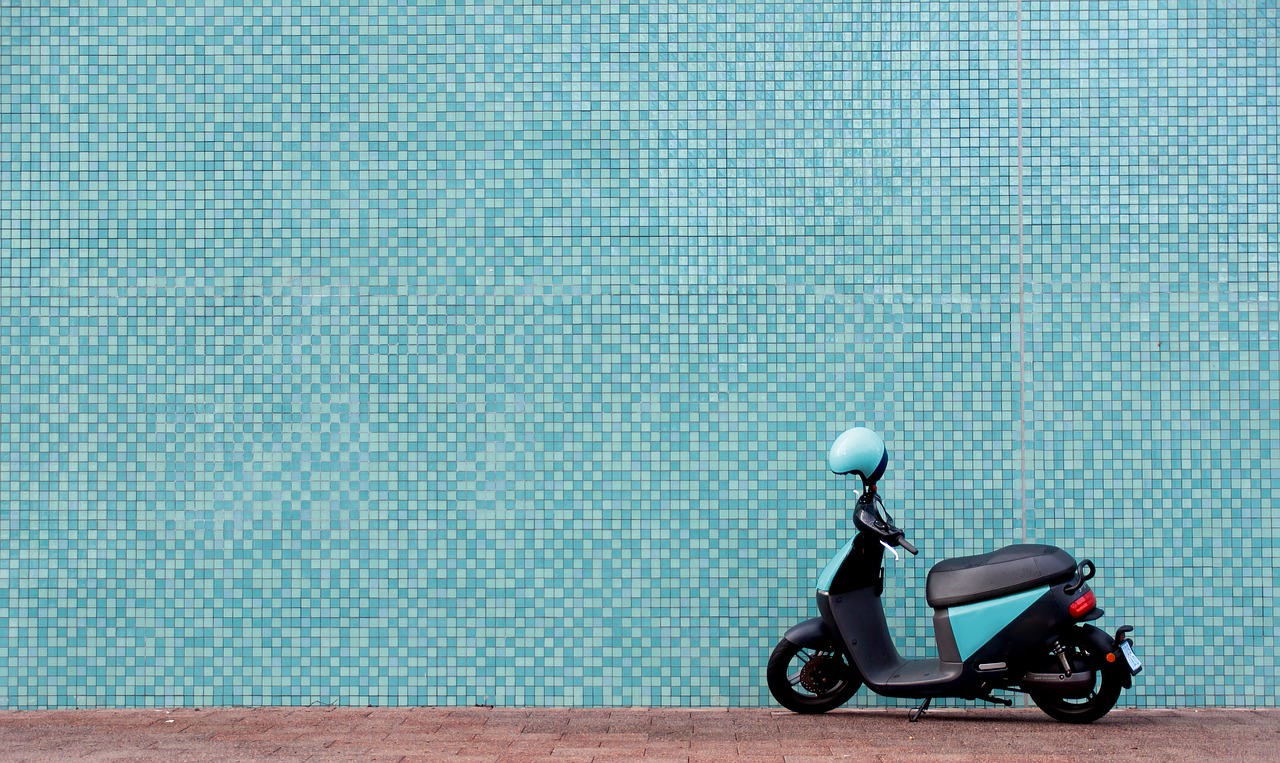
Choosing the Right Materials
When it comes to crafting stunning oversized wall art, is absolutely crucial. The materials you select not only determine the durability of your artwork but also its overall aesthetic appeal. Imagine walking into a room and being greeted by a magnificent piece that draws the eye and sparks conversation—this is the power of well-chosen materials!
One of the most popular options for wall art is canvas. It's lightweight, easy to handle, and can be painted on directly, allowing for a smooth finish that enhances the colors and textures of your artwork. Canvas can be stretched over a frame or left unframed for a more casual look. Alternatively, wood can add a rustic charm to your piece. Whether you choose plywood, reclaimed wood, or even wooden pallets, the natural grain can create a stunning backdrop for your designs. Just think of how a beautiful, weathered wood piece can bring warmth to any space!
If you're looking for something a bit more tactile, consider using fabric. Fabric wall art can range from quilts to textile hangings, adding a soft, inviting touch to your decor. You can even combine different materials to create a mixed-media piece that truly stands out. For example, imagine a canvas base with wooden accents and fabric elements layered on top—this kind of creativity can turn your wall into a gallery!
Before diving into your project, it's also wise to consider the environment where your artwork will be displayed. Will it be in a sunlit room? If so, you might want to opt for UV-resistant materials to prevent fading. Or perhaps it's in a humid area, like a bathroom, where moisture can warp certain materials. Always think about how your chosen materials will hold up in their intended environment.
To help you get started, here's a quick comparison of different materials:
| Material | Durability | Texture | Best For |
|---|---|---|---|
| Canvas | High | Smooth | Painted Art |
| Wood | Very High | Natural Grain | Rustic Decor |
| Fabric | Medium | Soft | Textile Art |
In summary, the right materials can make or break your oversized wall art project. Whether you lean towards the classic appeal of canvas, the rustic charm of wood, or the inviting softness of fabric, remember to consider not just the look but the longevity and suitability of the materials for your space. So, gather your supplies, unleash your creativity, and get ready to transform your walls into a stunning display of art!
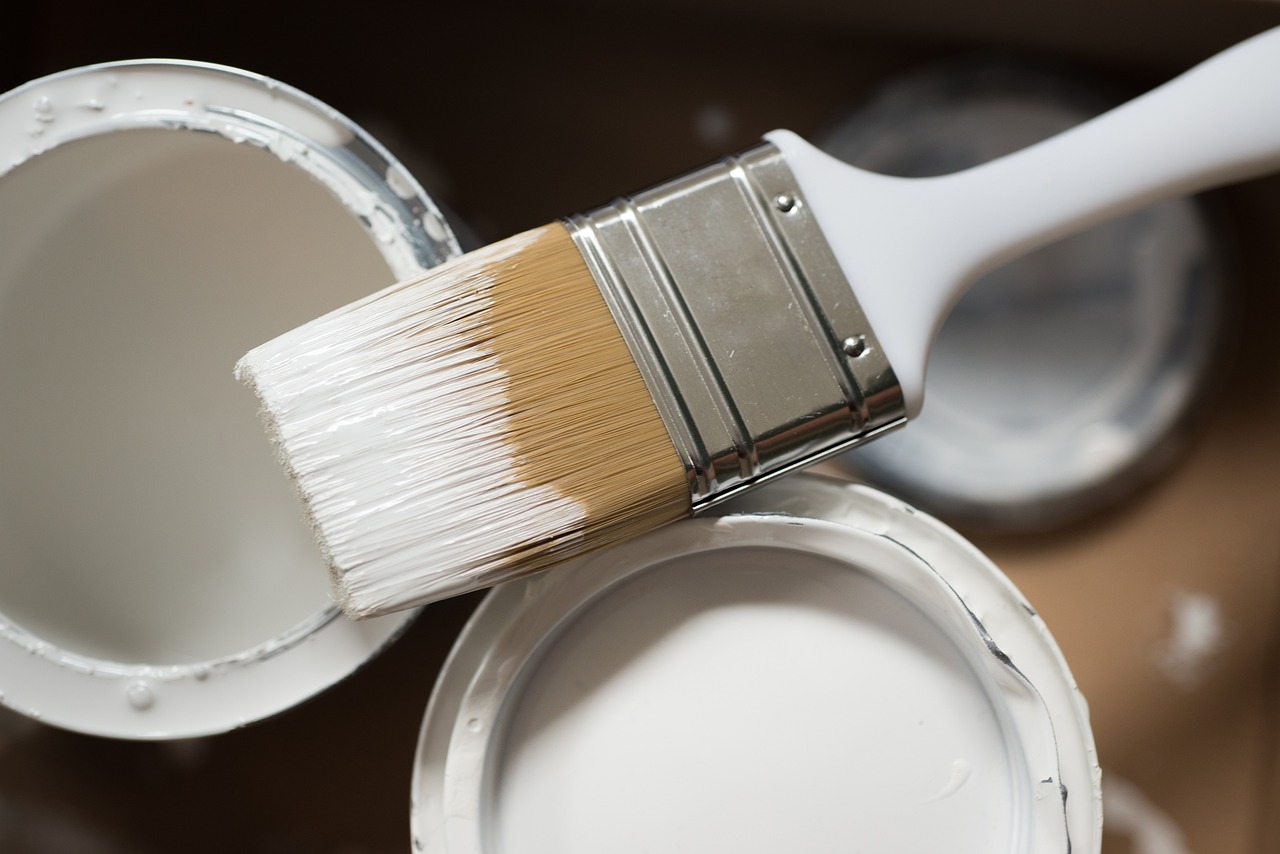
Design Inspiration
Finding the right is like discovering the secret sauce that transforms your oversized wall art project from mundane to magnificent. It’s the spark that ignites your creativity and helps you express your unique style. So, where do you begin? You can draw inspiration from a variety of sources, whether it's the breathtaking beauty of nature, the intriguing world of abstract art, or even the latest trends in home decor. The key is to keep your eyes open and your mind flexible, ready to embrace ideas that resonate with you.
One of the most rewarding sources of inspiration is nature. Imagine the vibrant colors of a sunset, the intricate patterns of leaves, or the calming hues of the ocean. These elements can be translated into stunning wall art that not only beautifies your space but also brings a sense of tranquility and connection to the natural world. For instance, you might consider creating a large canvas piece that mimics the swirling patterns of a river or the gentle curves of a flower. By incorporating organic shapes and earthy tones, you can create a refreshing focal point that draws the eye and warms the heart.
When it comes to nature-inspired designs, think about how you can incorporate various elements in a way that feels harmonious. You could use flowing lines to represent wind or waves, and vibrant colors to mimic the changing seasons. For example, a piece featuring a lush green landscape can evoke feelings of serenity, while a bold floral design might add a pop of color and energy to your walls. The beauty of nature is that it offers endless possibilities for creativity!
Incorporating organic shapes into your oversized art pieces can add a soft, inviting touch to your decor. These shapes can be anything from gentle curves that mimic the contours of hills to abstract forms that suggest the movement of water. By experimenting with these shapes, you can create a sense of flow and harmony in your artwork. For instance, consider using a palette knife to create textured layers that resemble the undulating landscape, or using stencils to add intricate details that echo the beauty of nature.
Choosing the right color palette is essential for achieving harmony in your artwork. Think about the mood you want to create: do you prefer calming blues and greens, or vibrant reds and yellows? The colors you select should not only complement your existing decor but also reflect your personal style. A well-thought-out color scheme can elevate your oversized wall art, making it a true statement piece. For example, if your room features neutral tones, a bold piece with striking colors can add drama and excitement.
In addition to nature, abstract art techniques can also serve as a rich source of inspiration. Abstract art allows for freedom and experimentation, enabling you to express your emotions and ideas in a way that is uniquely yours. Whether you prefer geometric shapes, splashes of color, or mixed media techniques, the world of abstract art is vast and varied. Don’t be afraid to play with different materials and styles until you find what resonates with you!
Ultimately, the journey of creating oversized wall art is as important as the finished product itself. Embrace the process, explore different inspirations, and let your creativity flow. Your wall art is a reflection of you—make it something special!
Q: What materials are best for creating oversized wall art?
A: The best materials for oversized wall art depend on your design. Popular choices include canvas, wood, and fabric, as they offer durability and versatility. Choose what feels right for your project!
Q: How can I find design inspiration?
A: Look around you! Nature, abstract art, and current design trends are great sources of inspiration. Keep a sketchbook or digital mood board to collect ideas as you come across them.
Q: What are some tips for hanging oversized wall art?
A: Ensure you measure your wall space accurately, use a level for straight placement, and consider the height at which you hang your art for optimal viewing. It should be eye-level for the best visual impact!

Nature-Inspired Designs
When it comes to crafting oversized wall art, drawing inspiration from nature can be a truly rewarding experience. Nature is a boundless source of creativity, offering a vibrant palette and an array of textures that can breathe life into your living space. Imagine transforming a blank wall into a breathtaking landscape or a tranquil forest scene that invites calmness and serenity into your home. By incorporating elements of the natural world, you can create a piece that not only captures attention but also evokes emotions and memories.
One of the most appealing aspects of nature-inspired designs is their versatility. You can choose to focus on specific elements such as floral patterns, majestic landscapes, or even abstract representations of natural phenomena. For instance, consider creating a large canvas featuring oversized sunflowers or a cascading waterfall. The beauty of these designs lies in their ability to transport viewers to a different place, making them feel as though they are stepping into a serene garden or a peaceful forest.
To help you get started, here are a few ideas for incorporating nature into your oversized wall art:
- Floral Patterns: Use vibrant colors and bold shapes to create a stunning floral composition. Think of giant daisies or abstract representations of wildflowers that can bring a pop of color to your room.
- Landscapes: Capture the essence of a beautiful sunset or a misty mountain range. Use a mix of colors and textures to convey depth and emotion in your artwork.
- Animal Motifs: Incorporate silhouettes or detailed illustrations of animals that resonate with you. Whether it’s a majestic eagle or a playful dolphin, these elements can add a personal touch.
Another fantastic approach is to utilize organic shapes in your designs. These shapes mimic the natural curves and lines found in the environment, creating a soft and inviting aesthetic. Think about how the gentle curves of leaves or the flowing lines of a river can be translated into your artwork. By embracing these organic forms, you can create a piece that feels harmonious and connected to the world around you.
Don’t forget about the importance of color palettes when designing your nature-inspired wall art. The colors you choose can significantly impact the mood and feel of your piece. For example, soft greens and blues can evoke a sense of tranquility, while bright yellows and oranges can bring about feelings of joy and energy. Consider selecting a palette that complements your existing decor while also making a bold statement. This way, your artwork will not only stand out but also seamlessly blend into your home’s atmosphere.
In conclusion, nature-inspired designs offer an incredible opportunity to personalize your oversized wall art while connecting with the beauty of the natural world. By exploring various elements such as floral patterns, landscapes, and organic shapes, you can create a stunning piece that reflects your unique style and brings warmth to your space. So, why not take a stroll in nature, gather some inspiration, and let your creativity flow? Your walls are waiting for a touch of the great outdoors!
Q1: What materials are best for creating nature-inspired wall art?
A1: Materials like canvas, wood, and even fabric can work wonders for nature-inspired wall art. Each offers different textures and finishes that can enhance your design.
Q2: How can I ensure my oversized wall art looks cohesive with my existing decor?
A2: Choose a color palette that complements your current decor. Additionally, consider the style of your furniture and other decorations to ensure harmony in your space.
Q3: What techniques can I use to create organic shapes in my artwork?
A3: You can use freehand painting, stencils, or even natural materials like leaves and branches to create beautiful organic shapes that mimic nature.

Using Organic Shapes
When it comes to crafting oversized wall art, incorporating organic shapes can truly elevate your design. These shapes, characterized by their flowing lines and natural forms, evoke a sense of warmth and tranquility that geometric shapes often lack. Think about how nature itself is filled with curves and irregularities—just like the branches of a tree or the petals of a flower. By embracing these organic forms, you can create a piece that feels alive and inviting.
One of the best aspects of using organic shapes is their versatility. You can create a stunning abstract piece that mimics the gentle waves of the ocean or a more literal representation of a lush landscape. The beauty of organic shapes lies in their ability to connect with the viewer on a deeper emotional level. They can remind us of the natural world, grounding us in a space that might otherwise feel sterile or overly structured.
To incorporate organic shapes into your oversized wall art, consider the following techniques:
- Flowing Lines: Use long, sweeping lines that mimic the natural curves found in nature. These lines can guide the eye and create a sense of movement within your artwork.
- Layering: Combine multiple organic shapes to create depth and interest. Layering different materials, such as fabric and paint, can enhance the three-dimensional quality of your piece.
- Negative Space: Don’t be afraid to leave some areas open or unpainted. Negative space can be just as powerful as the shapes you include, allowing the viewer's imagination to fill in the gaps.
Moreover, using organic shapes can also be a meditative process. As you create, you might find yourself lost in the rhythm of your strokes, much like a dancer moving gracefully across the floor. This connection to the creative process can be incredibly fulfilling, making the final piece not just a decoration, but a reflection of your journey.
In terms of color, organic shapes can be paired beautifully with earthy tones or vibrant hues found in nature. Imagine a large canvas where soft greens and blues flow into one another, creating a serene landscape, or bold reds and yellows that mimic the fiery colors of a sunset. The choice of color can significantly influence the mood of your artwork, making it feel either calming or energizing.
Ultimately, using organic shapes in your oversized wall art allows you to create something that feels both personal and universal. It invites viewers to experience a moment of connection with nature, art, and themselves. So, grab your paintbrush or your crafting materials, and let those organic shapes flow!
Q: What are organic shapes?
A: Organic shapes are forms that are inspired by nature, characterized by flowing lines and irregular curves, as opposed to geometric shapes which are more structured and angular.
Q: How can I incorporate organic shapes into my wall art?
A: You can incorporate organic shapes by using flowing lines, layering different materials, and utilizing negative space. Experiment with colors found in nature to enhance the effect.
Q: Do I need special materials to create organic shapes?
A: No, you can use a variety of materials such as canvas, wood, or even fabric. What matters most is your creativity and willingness to explore different forms and textures.
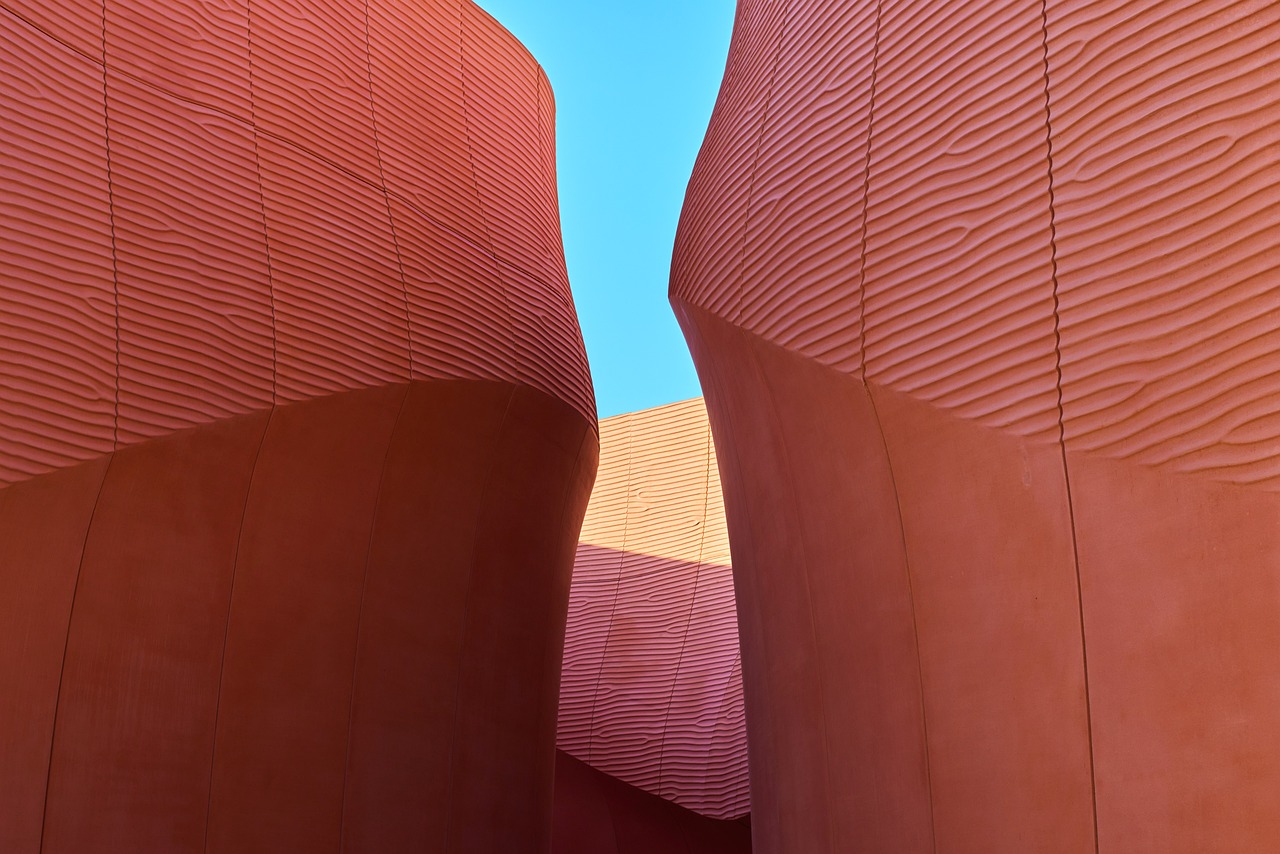
Color Palettes
Choosing the right color palette for your oversized wall art is like picking the perfect outfit for a special occasion—it can make all the difference! The colors you select not only reflect your personal style but also set the mood and tone of your space. Imagine walking into a room where the colors are harmonious and inviting; it instantly feels like home. But how do you go about selecting those colors? Let’s dive into some tips and tricks!
First off, consider the existing color scheme of the room where your art will hang. You want your artwork to complement your decor rather than clash with it. A good rule of thumb is to choose a palette that includes one or two of the dominant colors already present in the room. For instance, if your living room has a lot of warm tones—think earthy browns and soft yellows—incorporating similar hues into your wall art can create a seamless flow. This doesn’t mean you can’t introduce a pop of color! A vibrant teal or a rich burgundy can serve as a stunning focal point.
Another fantastic approach is to draw inspiration from nature. Nature has an incredible way of combining colors that work beautifully together. Think about the colors you see in a sunset: warm oranges, deep purples, and soft pinks. You can create a similar palette for your wall art to evoke feelings of calm and serenity. Here’s a quick example of a nature-inspired color palette:
| Color | Hex Code | Usage |
|---|---|---|
| Sunset Orange | #FF4500 | Accent |
| Soft Lavender | #E6E6FA | Main |
| Deep Sea Blue | #4682B4 | Background |
When it comes to creating your own palette, consider using a color wheel. This handy tool can help you understand the relationships between colors. For instance, complementary colors (those opposite each other on the wheel) can create a vibrant contrast, while analogous colors (those next to each other) offer a more serene look. Mixing these can lead to stunning results! You might even want to try a monochromatic scheme, using different shades of the same color for a sophisticated and cohesive appearance.
Lastly, don’t forget about the emotional impact of colors. Colors can evoke feelings and set the atmosphere of your space. For example:
- Blue: Calm and serene
- Yellow: Cheerful and energetic
- Red: Passionate and bold
- Green: Fresh and revitalizing
By carefully selecting your color palette, you can create oversized wall art that not only stands out but also enhances your living space. So, grab your paintbrushes and let your creativity flow! Remember, the goal is to create something that not only looks fabulous but also resonates with you personally.
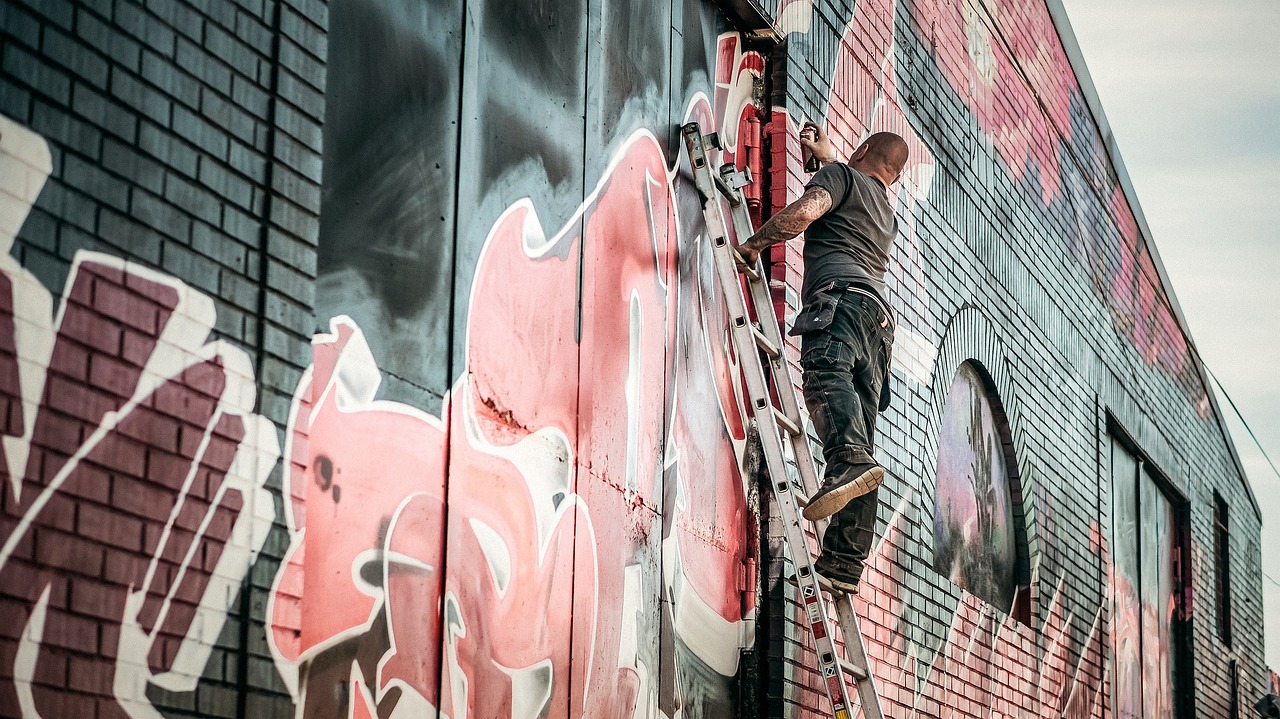
Abstract Art Techniques
When it comes to crafting oversized wall art, open up a world of possibilities. They allow you to express your emotions and creativity without the constraints of realism. Think of abstract art as a playground for your imagination; it’s where you can throw caution to the wind and let your inner artist run wild! Whether you're a seasoned artist or a DIY novice, there are several techniques you can experiment with to create stunning pieces.
One popular method is to use color pouring, which involves mixing acrylic paints with a pouring medium. This technique creates mesmerizing swirls and patterns that are completely unique. Imagine pouring a vibrant mix of colors onto a canvas and watching them blend into beautiful shapes, almost like a mesmerizing dance. This method is not just visually stunning; it’s also incredibly therapeutic, allowing you to focus solely on the movement of the paint.
Another technique to consider is collage art. This approach involves layering different materials such as paper, fabric, or even found objects onto your canvas. The beauty of collage is that it combines texture and color in unexpected ways. You might start with a base layer of old newspaper clippings, then add vibrant fabric swatches and finish off with some acrylic paint splatters. The end result is a rich, textured piece that tells a story through its layers.
If you're looking for something a bit more structured, geometric abstraction is a fantastic choice. This technique focuses on using shapes, lines, and colors to create a visually striking composition. You can use tools like rulers and stencils to achieve clean lines and sharp angles. This method can be particularly effective when paired with a bold color palette, making your oversized wall art a true statement piece that draws the eye.
For those who prefer a more organic feel, consider drip painting. This technique, famously used by artists like Jackson Pollock, involves dripping or pouring paint onto the canvas from above. It’s all about embracing spontaneity and allowing the paint to flow freely. The result is a dynamic piece that captures movement and energy, perfect for adding a sense of vibrancy to any room.
Lastly, don't underestimate the power of mixed media. This technique allows you to combine various art forms, such as painting, drawing, and photography, into one cohesive piece. For example, you could start with a painted background, overlay it with a printed photograph, and then add hand-drawn elements on top. This approach not only adds depth to your artwork but also makes it a true reflection of your personality.
As you explore these abstract art techniques, remember that the key is to have fun and enjoy the creative process. There are no right or wrong answers in art, and each piece you create is a unique expression of your thoughts and feelings. So grab your materials, let your imagination soar, and create oversized wall art that will leave your guests in awe!
- What materials do I need to start creating abstract art? You can start with basic supplies like acrylic paints, canvas, brushes, and any additional materials like fabric or paper for mixed media.
- Can I use recycled materials for my artwork? Absolutely! Using recycled materials can add a unique touch to your art and is a great way to be environmentally friendly.
- How do I know when my artwork is finished? Trust your instincts! If you feel that your piece conveys what you want it to express, then it’s likely finished. Take a step back and see if it resonates with you.
- Is there a specific technique I should start with as a beginner? Color pouring and collage art are both beginner-friendly techniques that allow for creativity without needing advanced skills.

Framing Your Artwork
Framing your oversized wall art is like putting the icing on a cake; it enhances the overall look and makes it truly stand out. A well-chosen frame can transform a piece of art from something ordinary into a stunning focal point in your home. But how do you choose the right frame? Well, that depends on the style of your artwork and the vibe you're aiming for in your space. Are you going for a modern, sleek look, or something more rustic and cozy? Understanding the aesthetic you want to achieve is the first step in selecting the perfect frame.
When considering framing options, you might want to explore a variety of materials. Here are some popular choices:
- Wood: Offers a warm, classic feel and can be stained or painted to match your decor.
- Metal: Provides a contemporary edge and is available in various finishes like brushed nickel or matte black.
- Plastic: An affordable option that can mimic the look of wood or metal, making it versatile for different styles.
Once you've decided on the material, consider the style of the frame. A minimalist frame can highlight the artwork itself, while an ornate frame can add a touch of elegance and drama. Think of your frame as a partner to your art; it should complement and enhance your piece rather than overpower it. For instance, if you have a vibrant abstract painting, a simple black or white frame might be the best choice to let the colors pop. On the other hand, if your art is more subdued, an ornate frame can add a layer of richness and depth.
Another important aspect of framing is the size of the frame in relation to your artwork. A frame that is too small may make your art feel cramped, while one that is too large can overwhelm the piece. The key is to find a balance that allows your artwork to breathe. A good rule of thumb is to leave at least two to four inches of space between the edge of the artwork and the frame. This not only creates a visual buffer but also draws the eye in, allowing viewers to appreciate the details of your art.
Now, let's talk about DIY frame ideas. If you're feeling crafty, making your own frames can be a fun and rewarding project. You can use inexpensive materials like reclaimed wood or even cardboard to create unique frames that reflect your personal style. Plus, this approach allows you to customize the size and color to perfectly fit your artwork. There are countless tutorials online that can guide you through the process, making it accessible even for beginners.
Finally, once your artwork is framed, it’s time to hang it up! Proper hanging techniques are crucial to ensure that your art is displayed securely and attractively. Measure the height at which you want to hang the piece, and use a level to make sure it's straight. A common mistake is to hang art too high; ideally, the center of the artwork should be at eye level for the best viewing experience. And remember, don't be afraid to get creative with your arrangement! Gallery walls, where multiple pieces are hung together, can create a dynamic and visually interesting display.
Q: What type of frame is best for oversized wall art?
A: The best type of frame depends on your artwork and personal style. Generally, wooden or metal frames work well for oversized pieces, as they provide the necessary support and can be customized to fit your decor.
Q: How do I hang oversized artwork securely?
A: Use appropriate wall anchors and hooks designed for heavy items. Make sure to measure and level the artwork before securing it to ensure it hangs properly.
Q: Can I create a gallery wall with oversized art?
A: Absolutely! Just ensure that the scale of the artwork and the arrangement is visually balanced. Mixing different sizes and styles can create a captivating display.

DIY Frame Ideas
Creating your own frames can be an incredibly rewarding experience, allowing you to add a personal touch to your oversized wall art. Not only does it give you the freedom to choose materials and styles that resonate with your aesthetic, but it also saves you money in the process! Imagine walking into your living room and seeing a stunning piece of art, framed in a way that complements your decor perfectly. Sounds appealing, right? Let’s dive into some creative DIY frame ideas that can transform your artwork into a centerpiece.
One popular option is to use reclaimed wood. This choice not only adds a rustic charm to your art but also promotes sustainability. You can find old wooden pallets or barn wood, which can be cut down to size and stained or painted to match your color scheme. The beauty of reclaimed wood is in its imperfections, which often tell a story and add character to your piece. Plus, the process of sanding and finishing the wood can be quite therapeutic!
If you're looking for something a bit more modern, consider using metal frames. You can easily create a sleek, industrial look by using metal pipes or even old bicycle parts. Just cut them to the desired length and assemble them into a frame that suits your artwork. This approach not only looks chic but also adds a contemporary edge to your decor. Imagine a bold abstract piece framed in shiny metal; it’s sure to catch the eye!
For those who love a pop of color, using foam board can be a fun and affordable option. Simply cut the foam board to the size of your artwork and paint it in vibrant hues that match or contrast with the piece. Not only is foam board lightweight, making it easy to hang, but it also provides a modern, clean look. You can even layer different colors to create a shadow box effect, adding depth and interest to your wall display.
Lastly, if you’re feeling particularly crafty, why not try a fabric-wrapped frame? This involves wrapping a simple wooden frame with your choice of fabric—think bold patterns or soft textures. This method not only softens the edges of your artwork but also allows you to incorporate fabrics that tie in with your overall decor theme. It’s like giving your art a cozy sweater! And the best part? You can easily switch out the fabric whenever you want a new look.
To help you visualize these ideas better, here’s a quick comparison table showcasing the different DIY frame options:
| Frame Type | Materials Needed | Style | Difficulty Level |
|---|---|---|---|
| Reclaimed Wood | Old wood, saw, sandpaper, stain/paint | Rustic | Medium |
| Metal Frame | Metal pipes/bicycle parts, cutter | Industrial | Hard |
| Foam Board | Foam board, paint | Modern | Easy |
| Fabric-Wrapped Frame | Wooden frame, fabric, glue | Cozy | Medium |
With these DIY frame ideas, you can create a stunning presentation for your oversized wall art that reflects your personality and style. Remember, the goal is to have fun and let your creativity shine! So gather your materials, put on some music, and start crafting a frame that will make your artwork pop!
- What materials are best for DIY frames? Reclaimed wood, metal pipes, foam board, and fabric are all great options!
- How do I measure my artwork for a frame? Measure the width and height of your artwork and add an extra inch for the frame overlap.
- Can I paint my DIY frame? Absolutely! Painting your frame can add a personal touch and help it match your decor.
- How do I hang my oversized wall art? Use wall anchors for heavier pieces and make sure to measure and level before hanging.
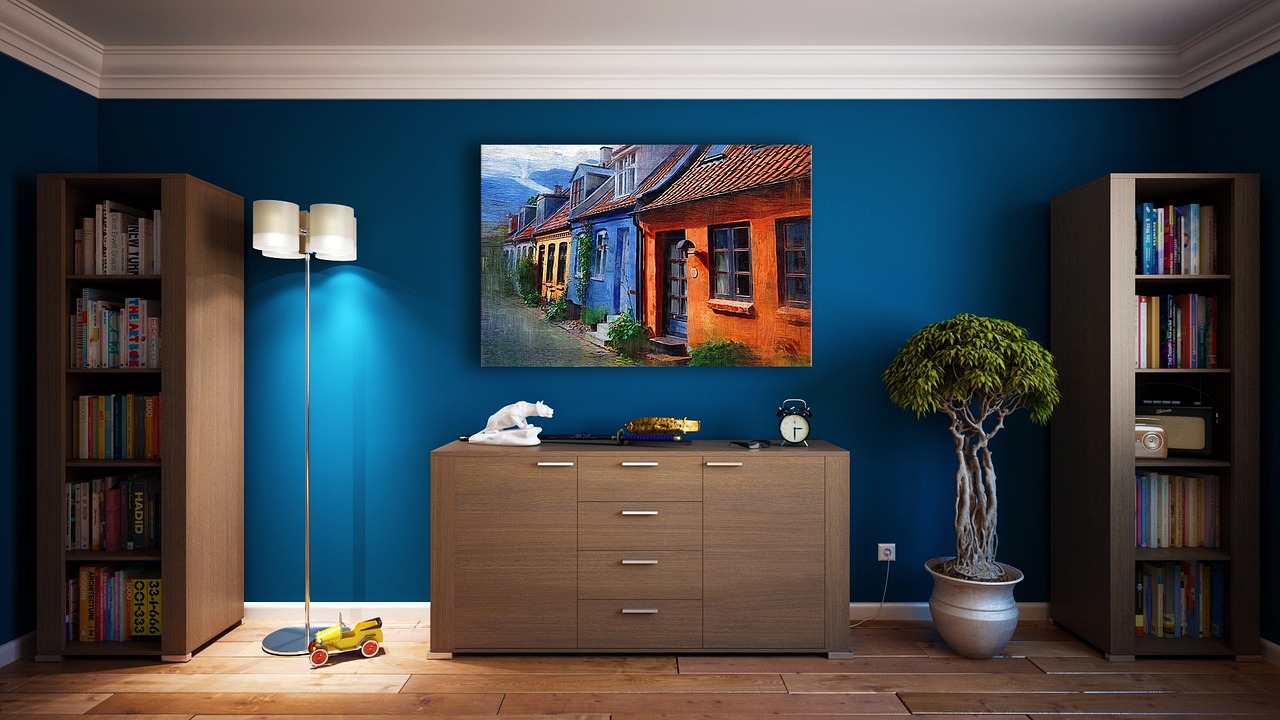
Hanging Techniques
Hanging your oversized wall art can feel like an art form in itself. It's not just about slapping a nail in the wall and calling it a day; it's about creating a visual impact that draws the eye and enhances your space. First and foremost, you need to consider the weight of your artwork. Heavier pieces may require more robust hanging hardware, while lighter pieces can often get away with simple hooks. But how do you ensure that your art is both secure and aesthetically pleasing?
One of the best practices is to use a level when hanging your art. Nobody wants to walk into a room and see a piece that’s slightly tilted—it's like wearing mismatched socks! To achieve that perfect line, measure the distance from the floor to the top of the artwork, and then mark where the top will sit on the wall. After you’ve marked your spot, use a level to ensure that your artwork will hang straight. This little tool can save you from a lot of frustration and make your wall art look professionally installed.
In terms of hardware, consider using wall anchors or screws for heavier pieces. If you're hanging multiple pieces, a gallery wall can create a stunning visual effect. For this, lay out your pieces on the floor first to experiment with different arrangements before committing to any holes in the wall. This way, you can play around with spacing and alignment until you find a layout that feels just right. Once you've settled on an arrangement, you can use a painter's tape to outline where each piece will go, making it easier to transfer your design to the wall.
Another technique is to use a picture hanging system, which allows you to easily adjust the height of your artwork without putting more holes in your wall. These systems often come with a rail that is mounted to the wall and hooks that can slide along the rail. This is especially useful if you like to change your decor frequently or if you want to create a dynamic display that can evolve over time. Imagine being able to swap out pieces based on the season or your mood—how refreshing!
Lastly, consider the lighting around your artwork. Proper lighting can enhance the colors and textures of your piece, making it pop even more. Wall sconces or directional spotlights can add a dramatic flair, while natural light can bring out the subtleties in your artwork. Just be cautious with direct sunlight, as it can fade colors over time.
- What type of hardware should I use for heavy wall art?
It's best to use wall anchors or screws that are rated for the weight of your artwork. Always check the manufacturer's recommendations for your specific piece. - How can I ensure my artwork is level when hanging?
Use a level tool after marking your spot on the wall. Double-check before securing the hardware to avoid any tilting. - What if I want to change my artwork frequently?
Consider using a picture hanging system that allows for easy adjustments without additional holes in your wall. - How can I protect my artwork from fading?
Avoid hanging your artwork in direct sunlight and consider using UV-protective glass if framing.
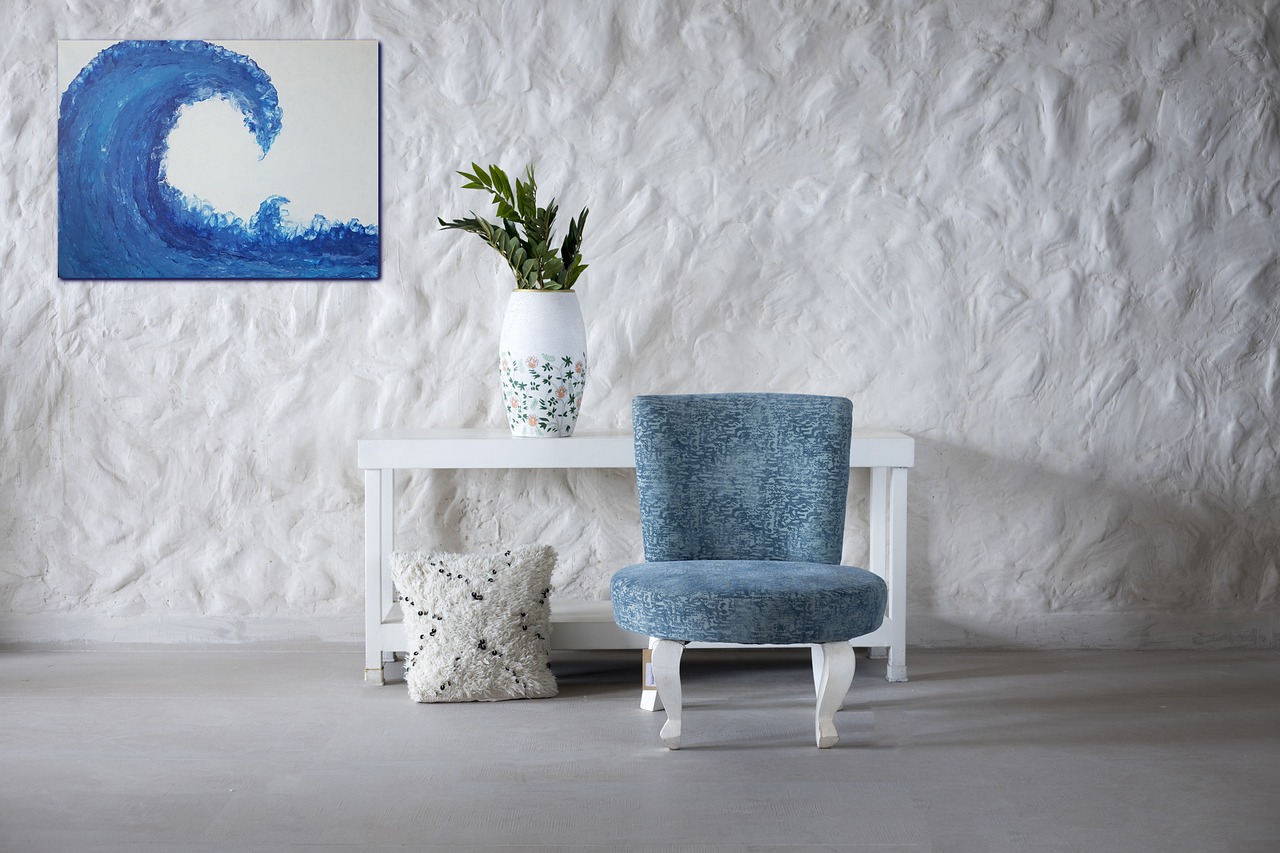
Maintenance and Care
Taking care of your oversized wall art is essential to ensure that it remains a stunning focal point in your home for years to come. Just like a beautiful garden needs tending, your artwork requires regular maintenance to keep it looking fresh and vibrant. So, what are the best practices for maintaining your masterpieces? Let’s explore some key tips and tricks!
First and foremost, cleaning your wall art is crucial. Dust and grime can accumulate over time, dulling the colors and obscuring the details of your artwork. For canvas pieces, a gentle dusting with a soft, dry cloth can do wonders. If your art is framed, make sure to clean the glass with a non-abrasive cleaner to avoid scratches. For wooden or fabric pieces, a damp cloth can help remove stubborn dirt, but be careful not to soak the material as excess moisture can cause damage.
Another important aspect of maintenance is protection. If your artwork is exposed to direct sunlight, consider using UV-protective glass or placing it in a location that receives indirect light. This simple step can prevent fading and discoloration, ensuring that your colors remain as vibrant as the day you created them. Additionally, if you have pets or small children, think about using a protective coat or sealant on your artwork to guard against accidental spills or scratches.
Lastly, preserving your oversized wall art means being mindful of the environment in which it is displayed. Extreme temperatures and humidity can wreak havoc on your artwork. Ideally, keep your art in a climate-controlled space where temperatures remain stable and humidity levels are moderate. This will help prevent warping, cracking, or mold growth, ensuring that your art continues to inspire and impress.
In summary, maintaining your oversized wall art involves a combination of regular cleaning, protective measures, and environmental considerations. By following these simple guidelines, you can ensure that your artwork retains its beauty and charm for years to come. Remember, a little care goes a long way in preserving the essence of your creative expression!
- How often should I clean my oversized wall art? It's best to clean your artwork at least once a month to prevent dust buildup.
- Can I use water to clean my canvas art? Yes, but use a damp cloth and avoid soaking the canvas to prevent damage.
- What is the best way to protect my art from sunlight? Use UV-protective glass or hang your art in a location with indirect sunlight.
- How do I know if my artwork needs to be preserved? Look for signs of fading, discoloration, or physical damage, which indicate that preservation is needed.
Frequently Asked Questions
- What materials are best for crafting oversized wall art?
When it comes to creating oversized wall art, the materials you choose can make a significant difference. Popular options include canvas, which is lightweight and easy to work with; wood, which offers durability and a rustic look; and fabric, which can add texture and warmth to your decor. Consider the overall style you want to achieve and select materials that align with that vision.
- How can I find design inspiration for my wall art?
Finding design inspiration can be a fun and exciting process! Look around you—nature is filled with beautiful patterns and colors that can spark your creativity. You might also explore abstract concepts or popular design styles online. Websites like Pinterest and Instagram are treasure troves of ideas. Don't forget to think about what resonates with you personally; your wall art should reflect your unique style!
- What techniques can I use to create organic shapes in my artwork?
To incorporate organic shapes into your oversized wall art, start by sketching flowing lines and curves. Use your imagination to create shapes that mimic the beauty of nature, such as waves, leaves, or clouds. You can also experiment with various painting techniques, like watercolor or acrylic pouring, to achieve soft transitions and blends that feel inviting and natural.
- How do I choose the right color palette for my wall art?
Selecting a color palette is crucial for achieving harmony in your artwork. Consider the colors already present in your space and choose shades that complement them. You can use a color wheel to find contrasting or analogous colors that create visual interest. Remember, bold colors can make a statement, while softer tones can create a calming atmosphere—so think about the mood you want to set!
- What are some DIY frame ideas for my oversized wall art?
Creating your own frames can be a rewarding project! You can use materials like reclaimed wood for a rustic look or simple molding from a craft store for a more polished finish. Consider painting or staining the frame to match your artwork or decor. You can also get creative and use items like washi tape or fabric to add a unique touch to your frames!
- What are the best hanging techniques for oversized wall art?
Properly hanging your oversized wall art is essential for both aesthetics and safety. Start by measuring the space where you want to hang the piece, and use a level to ensure it's straight. Consider using wall anchors for heavier pieces to provide extra support. A good rule of thumb is to hang the center of the artwork at eye level, which typically falls around 57 to 60 inches from the floor.
- How can I maintain and care for my oversized wall art?
To keep your oversized wall art looking fresh, regular maintenance is key. Dust your artwork gently with a soft cloth to prevent dirt buildup. If your piece is made of fabric, consider spot cleaning as needed. For paintings, avoid direct sunlight, which can fade colors over time. If you want to protect your art further, consider applying a protective varnish or sealant, especially for painted pieces.



















